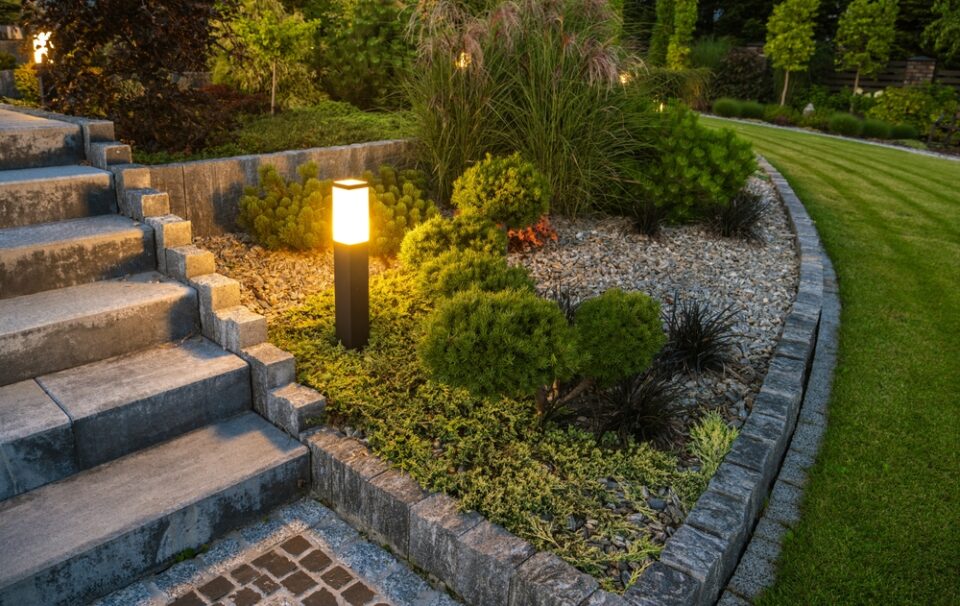“How will working with a landscape architect assist you in creating an amazing outdoor space?” Welcome to our blog which will delve into landscape design and garden planning – a guide for you as you try to shape soil to grow something beautiful out here.
Ready to create a beautiful oasis in your backyard? You’ve come to the right place if so! This article will talk about how to plan and build landscapes and how plants grow. Tap into your artistic side, and fashion an incredible outdoor garden landscape design that astonishes everyone.
Examining Different Garden Design Ideas.
A pleasant outdoor space requires a well-designed garden. It not only makes the area seem better overall, but it also offers practical areas for gardening, entertainment, and relaxation. Let’s examine some essential elements of landscape design to do this.
In every landscape design, natural elements are a must. Any outdoor space gains more life, colour, and texture with the addition of plants, trees, and water elements. To produce a vibrant and well-balanced design, use a variety of locally appropriate foliage, flowers, and plants.
Walkways, patios, and fences are examples of hardscape elements that help define different zones and provide structure to your landscape. They might make venues more accessible and facilitate site transfers. To add uniqueness and charm to your design, use odd components like fire pits, lounging areas, and pergolas.
It is essential that you do thorough research and draw inspiration for your garden design from magazines, books, and websites. Take your likes, lifestyle, and climate into account while building something that satisfies your needs. If you want the best outcomes, go with knowledgeable landscape designers who can provide guidance and knowledge tailored to your requirements.
The Craft of Building Terrain
The next stage after deciding on a garden design concept is to use landscaping design and construction to make it a reality. Throughout this creative stage, skilled professionals must carefully prepare and execute your idea in order to make it a reality.
Clearing and readying the ground is the first stage in creating a landscape. This involves getting rid of any plants, trash, or obstacles that might get in the way of growth. It creates a space that is ready for your landscape design to succeed.
When designing a landscape, drainage is as important as grading. Accurate grading ensures good drainage of the water and reduces erosion and flooding. Install properly designed drainage systems, including swales and French drains, and outdoor areas will be safe and functional longer.
Patios, retaining walls, and walkways are necessary elements of landscape construction. These structures are both functional and add to the overall beauty of a design. Ensure longevity and functionality by using fine-quality materials and employing skilled craftsmanship.
Irrigation systems are another crucial aspect of landscape design. An efficient irrigation system provides the right amount of water at the correct times and lessens water waste. Water conservation is optimal with advanced irrigation controllers or drip-irrigation systems.
Well-planned garden design requires plant selection. Local soil and climate should determine plant selection. A horticulturist can tell you which types of animals and plants will be good for your particular area.
Landscape Design and Sustainability
The idea of healthy farming is growing, as is people’s understanding of environmental problems.
In landscape design, there are various benefits to merging environmental strategies. The main advantages are twofold: for the environment and lower maintenance costs in the future.Once you have decided on your “hardscape,” why not capture rain? Rainwater collection systems will provide water for irrigation, and by doing so you will reduce the demand for drying plants.The yard has small areas for underground cisterns or rain barrels.The landscape should be arranged naturally so that you can use it. Noticed in the past that nature will continue to provide fresh greens if we would only draw on the supply hidden beneath.
If you would like to save time and work in your yard but still like to enjoy its beauty, choose plants that require less watering and little care. Let’s look at xeriscaping, which uses drought-tolerant plants and efficient watering systems to beautify your surroundings–but responsibly so.
Taking Care of and Expanding Your Garden
After your garden design is finished, it has to be regularly maintained to maintain its beauty and vitality. Frequent upkeep, such fertilising, pulling weeds, and pruning, keeps your garden looking nice and helps prevent issues.
A maintenance plan is necessary to sustain performance over time. Create a schedule for routine tasks and activities that align with the changing seasons to maintain the health of your garden. This rigorous approach promotes healthy growth while saving time and effort.
A garden is a flexible space that may change to suit your preferences or the most recent architectural styles. To keep your garden appearing appealing and new, you may want to consider making changes and adding new components over time. Look through websites, social media accounts, and gardening magazines to generate new ideas and opportunities.
Speaking with garden design experts on a regular basis will make it easier for you to deal with these changes and ensure the long-term success of your outdoor space. Depending on the area you have available, they may offer you ideas on how to expand your garden, add new features, or modify existing ones to better suit your changing needs.
In Summary
There are a number of ways to use garden design and landscape construction to transform your outside space into a fantastic refuge. By highlighting important elements like hardscaping and natural features, selecting appropriate plants, and using sustainable practices, one may create a design that is both visually beautiful and functional.
Remember that a garden is alive and requires constant care and adaptation. Regular upkeep and expert help may keep your outdoor area alive and attractive for years. Release your inner landscape architect to begin this imaginative journey. Realise your ideal garden design and see the remarkable transformation of your outside space.

